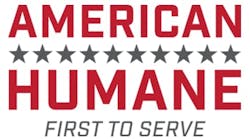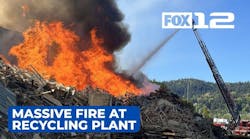The firefighters return to the same interior stairs that they had used to gain access to the floor above the fire but by now the staircase is untenable! They notify the incident commander (IC) via radio that they are trapped on the floor above. In the high heat and heavy smoke conditions they are looking for a way out. They need the help of a rapid intervention team.
These teams are referred to by many names i.e., firefighter assist and search team (FAST), rescue assist team (RAT), firefighter rescue available team (FRAT), rapid deployment unit (RDU) or rapid intervention company (RIC). They have one primary function: to assist and rescue firefighters suddenly in trouble.
Due to the dangerous nature of firefighting, unforeseen events can happen at any time, leaving firefighters in sudden peril. A building on fire has the inherent risk of a partial or total collapse, leaving members lost or missing. An extending fire can trap firefighters by cutting off their means of escape. Explosions can injure, trap or even kill firefighters. The phenomena of flashover can instantly change the dynamics at a building fire and trap firefighters operating in the structure with only seconds to escape.
Any unit can be designated a rapid intervention team. The IC could use the team for any sudden emergency endangering firefighters and therefore must be mindful not to assign it routine duties which could be handled by other units.
In New York, NY, on April 7, 1995, a rapid intervention team from Ladder Company 6 made a lifesaving-rope rescue of a trapped firefighter. The firefighter was directly above the fire, separated from his unit, with a depleted mask. He was spotted in an interior shaft window appearing disoriented. The IC determined a quick response was necessary and ordered the rapid intervention team into action. The team's immediate and skillful response averted tragedy.
The response protocol for dispatch of a rapid intervention team will vary by local needs. The IC could call in a team anytime it is considered necessary, particularly when members are operating in dangerous areas. This will enhance firefighter safety.
The rapid intervention team can always be turned back if the situation is under control or if conditions are not what they appeared to be initially. However, the team could be en route or at the scene if the situation is warranted. Any delay in dispatching could leave firefighters in trouble.
For firefighters' safety, every department needs some form of a rapid intervention team dispatch policy. This of course, will vary and should be implemented with the individual companies' needs and resources in mind. In New York City, for instance, the third ladder company dispatched to an "all hands" fire is designated as the "FAST truck." The Massapequa, NY, Volunteer Fire Department has an automatic mutual aid or response policy to assign a rapid intervention team. At a non-expanding operation, the second-due truck company or the heavy rescue company is designated as the rapid intervention team unit. At an expanding operation, a mutual aid company from a neighboring department be-comes the rapid intervention team.
Once a rapid intervention team is on the scene, the members' first responsibility is to have the officer report to the command post. Equipped with full turnout/bunker gear, including self-contained breathing apparatus (SCBA), they are ready to work. The proper tools needed to rescue a trapped firefighter are also essential. These include, but are not limited to, axes, halligan tools, hooks, hydra-rams and rabbit tools. In addition, if available, they should have power saws, torches and a resuscitator. If the fire building is large, has a complex layout or is a multiple-story building, they should also be equipped with lifesaving and search ropes.
The members should stand by near the command post, in sight of the IC but not blocking access to the command post. The rapid intervention team officer shall be guided by orders from the IC. Tools should be brought to the command post area or an area near the command post where the team is awaiting orders.
Members of the rapid intervention team should now start a visual size-up of the fire building and any exposures that are endangered. They should be monitoring the radio transmissions on the fireground to keep abreast of the progress in the fire building or reported lack of progress. The team's officer and members should then determine the need for portable ladders on the front of the fire building. This should be brought to the attention of the IC and upon his orders, two firefighters can begin to situate ladders. At least one of these firefighters should be equipped with a portable radio so as to be in constant contact with the team officer and the command post, in the event of a change in orders. It is advisable that these ladders be placed only on the front of the fire building or exposures so as to keep members under the limited supervision of their officer and the command post. Also, these ladders should only be taken from apparatus close to the fire building so members are always close at hand. This could be done at any building or operation where portable ladders will assist with firefighter safety. If the rapid intervention team is needed to assist a trapped or injured firefighter, the officer can summon the members to the building front.
The officer then assigns each firefighter a specific task, as dictated by the sudden hazardous event. The position of the rapid intervention team must be adapted to the type of building in which it is operating. Depending on the team's manpower, the officer could send two members to place the portable ladders on the fire building or, if needed, the exposures. If portable ladders are placed to an exposure, they will provide an escape route for members if they get in trouble, trapped or their initial entry site is cut off by an extending fire. These ladders also provide access to areas of the building for rapid intervention team members. If these ladders are not in place and firefighters become trapped, valuable time is lost getting and placing the needed ladders.
After the rapid intervention team has reported to the IC, and with the IC's approval, the team's qualified apparatus operator has the unique responsibility of checking the ladder apparatus already operating on the scene. That person's job is to see if the member operating the ladder apparatus is on the turntable/pedestal ready to assist of a firefighter appears in distress on the building front. If the regular apparatus is engaged in other firefighting duties or is assisting with the rescue and removal of fire victims, then the team's qualified apparatus operator may be ordered to remain with that apparatus.
If the first apparatus is properly manned and the fire is extending to an exposure, then the team's qualified apparatus operator observes whether there is a second ladder company on scene and properly manned. If on the scene and not manned, the IC must be notified. Upon the IC's orders, it is the rapid intervention team chauffeur's duty to man it and determine if it is in position to assist in operation or if it needs repositioning. If the units are manned by qualified personnel and the operator's assistance is not required, then that firefighter immediately reports back to the team officer to await further orders.
If the location of fire is above the reach of portable ladders, the rapid intervention team reports to the command post and operates as a unit. After receiving the IC's approval, the chauffeur shall remain with the truck, if needed.
If the fire is in a fireproof multiple dwelling or high-rise building, the IC will usually direct the rapid intervention team to operate on the floor below the fire, under the supervision of an operations chief or sector commander. This way, they are closer to the fire location and in the most advantageous location to assist a firefighter in distress.
Safety Measures
There are certain safety factors that the rapid intervention team should understand. First and foremost, team members operate from the command post as a unit, under direct command of their officer who receives orders from the IC. The other criteria:
- Portable ladders placed, when necessary, as ordered by the IC.
- At least one member involved in portable ladder operations be equipped with a portable radio.
- Members confine operations to the front of the fire building so as to be kept under limited supervision of their officer.
- The rapid intervention team must monitor radio traffic and continually size-up the fire building.
- All firefighting personnel, regardless of rank, should be in full turnout gear, with mask available and ready to help if a member becomes distressed.






